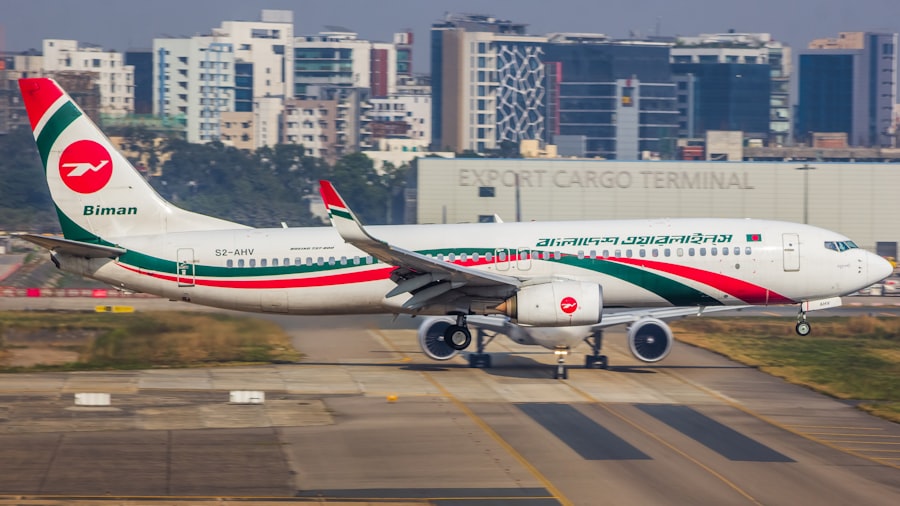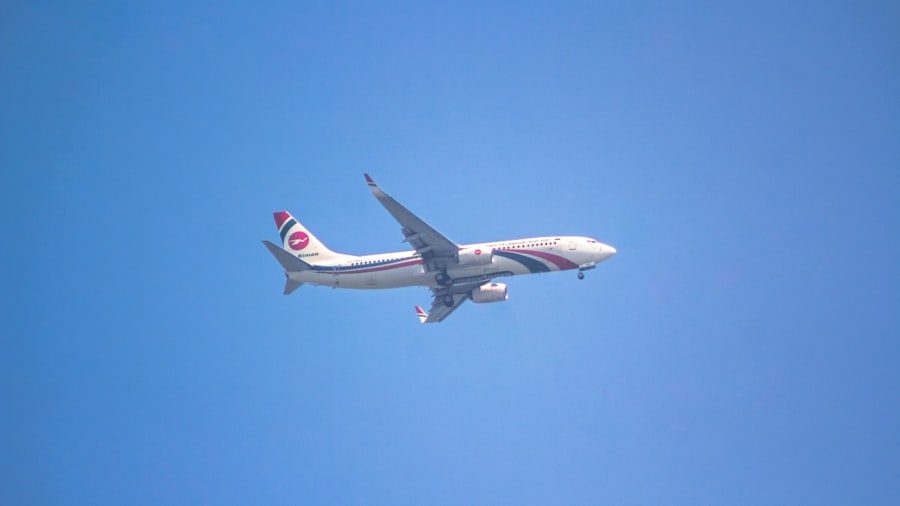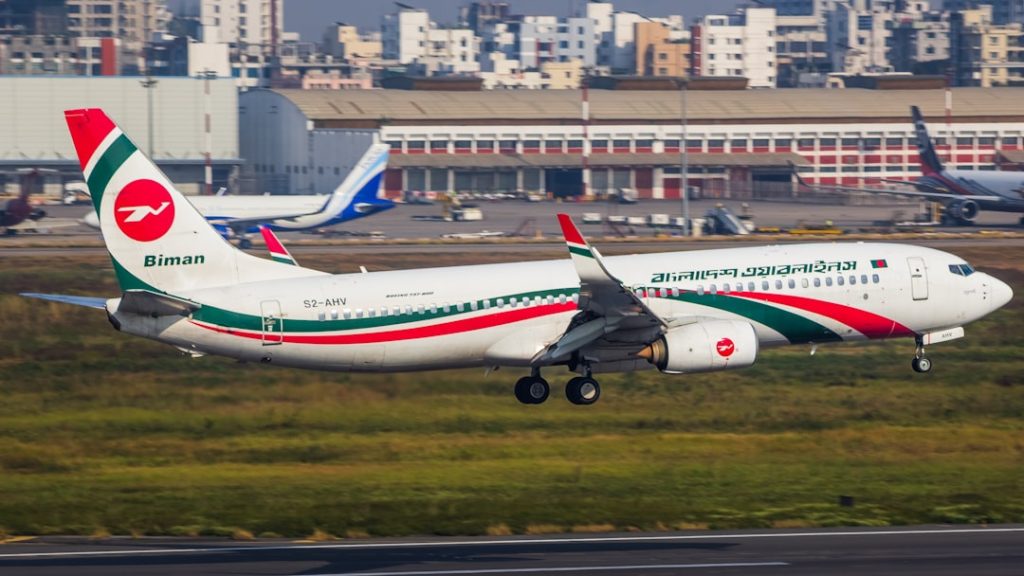The Boeing 737-800 is a pivotal model in the Boeing 737 family, which has become one of the most successful commercial aircraft series in aviation history. Introduced in the late 1990s, the 737-800 is a narrow-body jet that has been widely adopted by airlines around the globe for its versatility and efficiency. As a member of the Next Generation (NG) series, it was designed to replace the older 737-300 and 737-400 models, offering improved performance and passenger capacity.
The aircraft has played a significant role in shaping modern air travel, serving both low-cost carriers and traditional airlines alike. With a seating capacity typically ranging from 162 to 189 passengers, depending on the configuration, the 737-800 strikes a balance between comfort and efficiency. Its design allows for a range of operations, from short-haul flights to medium-haul routes, making it a favorite among airlines looking to optimize their fleets.
The aircraft’s popularity is underscored by the thousands of units produced, which have collectively logged millions of flight hours, establishing the 737-800 as a reliable workhorse in commercial aviation.
Key Takeaways
- The Boeing 737-800 is a popular narrow-body aircraft known for its reliability and operational efficiency.
- The design and features of the Boeing 737-800 focus on maximizing passenger comfort and cabin efficiency.
- The Boeing 737-800 is praised for its fuel efficiency and impressive range, making it a cost-effective choice for airlines.
- With strong performance and operational efficiency, the Boeing 737-800 is a versatile and reliable aircraft for various routes and conditions.
- The maintenance and reliability of the Boeing 737-800 contribute to its overall efficiency and appeal to airlines.
Design and Features of the Boeing 737-800
The design of the Boeing 737-800 is characterized by its sleek fuselage and advanced aerodynamic features that enhance its performance. One of the most notable aspects is its wing design, which incorporates winglets that improve fuel efficiency by reducing drag during flight. These winglets are not just aesthetic; they play a crucial role in enhancing the aircraft’s overall aerodynamic profile, allowing it to achieve better fuel economy and climb performance.
Inside, the Boeing 737-800 boasts a modern cockpit equipped with advanced avionics that enhance safety and operational efficiency. The flight deck features large digital displays that provide pilots with critical flight information at a glance. Additionally, the aircraft is designed with a spacious cabin that can be configured in various layouts to accommodate different airline needs.
The overhead bins are designed to maximize storage space, allowing passengers to stow their luggage conveniently. The cabin’s lighting system can be adjusted to create a more pleasant atmosphere during flights, contributing to an overall improved passenger experience.
Fuel Efficiency and Range of the Boeing 737-800

Fuel efficiency is one of the standout features of the Boeing 737-800, making it an attractive option for airlines looking to reduce operational costs. The aircraft is powered by CFM International CFM56-7B engines, which are known for their reliability and fuel-saving capabilities. These engines incorporate advanced technologies such as high bypass ratios and improved materials that contribute to lower fuel consumption compared to older models.
As a result, airlines operating the 737-800 can achieve significant savings on fuel expenses, which is particularly important in an industry where fuel costs represent a substantial portion of operating budgets. In terms of range, the Boeing 737-800 can cover distances of up to approximately 2,900 nautical miles (5,370 kilometers), depending on its configuration and payload. This range allows airlines to operate a variety of routes efficiently, from short domestic flights to longer international journeys.
The aircraft’s ability to serve diverse markets has made it a staple for many carriers, enabling them to connect cities that may not have been feasible with older aircraft models.
Performance and Operational Efficiency of the Boeing 737-800
| Metrics | Value |
|---|---|
| Maximum Takeoff Weight | 174,200 lbs |
| Maximum Range | 3,115 nautical miles |
| Cruise Speed | 514 mph |
| Fuel Efficiency | 0.029 nautical miles per pound of fuel |
| Maximum Altitude | 41,000 feet |
The operational efficiency of the Boeing 737-800 is further enhanced by its impressive performance characteristics. The aircraft is capable of cruising at altitudes of up to 41,000 feet, allowing it to avoid much of the weather turbulence that can affect lower-flying aircraft. This capability not only contributes to passenger comfort but also allows for more efficient routing and fuel management during flights.
Takeoff and landing performance are also critical aspects of the 737-800’s design. The aircraft can operate from shorter runways compared to larger jets, making it suitable for regional airports and secondary markets. This flexibility enables airlines to expand their route networks without being constrained by airport infrastructure limitations.
Additionally, the aircraft’s advanced flight control systems contribute to smoother handling and improved safety during all phases of flight.
Maintenance and Reliability of the Boeing 737-800
Maintenance is a crucial factor in determining an aircraft’s operational viability, and the Boeing 737-800 excels in this regard. The design of the aircraft allows for easier access to key components during maintenance checks, which can significantly reduce downtime and associated costs for airlines. Routine maintenance procedures are streamlined due to standardized parts and systems across the Boeing 737 family, allowing airlines to maintain multiple aircraft with similar training and resources.
Reliability is another hallmark of the Boeing 737-800. The aircraft has demonstrated an impressive track record in terms of safety and operational reliability over its years in service. With rigorous testing and quality control during production, coupled with ongoing support from Boeing, operators can trust that their fleets will perform consistently well.
This reliability translates into higher aircraft availability for airlines, enabling them to maximize their revenue-generating potential.
Passenger Comfort and Cabin Efficiency of the Boeing 737-800

Passenger comfort is an essential consideration for airlines operating the Boeing 737-800, especially given its role in both short-haul and medium-haul markets. The cabin is designed with ergonomics in mind, featuring comfortable seating arrangements that can be tailored to different service levels. Airlines often choose configurations that balance passenger comfort with capacity, ensuring that they can accommodate as many travelers as possible while still providing a pleasant flying experience.
The cabin layout also includes modern amenities such as improved lighting systems and larger windows that enhance natural light within the space. Many airlines have equipped their 737-800s with in-flight entertainment systems, Wi-Fi connectivity, and power outlets at each seat, catering to the needs of today’s tech-savvy travelers. These features not only improve passenger satisfaction but also contribute to an overall efficient cabin environment that encourages repeat business.
Environmental Impact and Sustainability of the Boeing 737-800
As environmental concerns continue to shape the aviation industry, the Boeing 737-800 has made strides toward sustainability through its design and operational efficiencies. The aircraft’s fuel-efficient engines significantly reduce carbon emissions per passenger mile compared to older models. This reduction in emissions is crucial as airlines face increasing pressure from regulators and consumers alike to adopt greener practices.
Moreover, Boeing has implemented various initiatives aimed at reducing the environmental footprint of its manufacturing processes. The use of advanced materials in construction helps lower weight without compromising safety or performance, further enhancing fuel efficiency. Additionally, airlines operating the 737-800 are increasingly exploring sustainable aviation fuels (SAFs) as part of their commitment to reducing greenhouse gas emissions.
By integrating SAFs into their operations, carriers can leverage the existing infrastructure while making meaningful progress toward sustainability goals.
The Overall Efficiency of the Boeing 737-800
The Boeing 737-800 stands out as a model of efficiency in modern aviation, combining advanced technology with practical design features that meet the demands of both airlines and passengers. Its fuel efficiency, operational flexibility, and reliability make it an indispensable asset for carriers worldwide. As airlines continue to navigate an evolving landscape marked by economic pressures and environmental considerations, the 737-800 remains a cornerstone of fleet strategies aimed at maximizing profitability while minimizing ecological impact.
In summary, the Boeing 737-800 exemplifies how thoughtful engineering can lead to an aircraft that not only meets but exceeds expectations across various metrics—fuel efficiency, passenger comfort, maintenance ease, and environmental responsibility. Its enduring popularity among airlines speaks volumes about its capabilities and adaptability in an ever-changing industry landscape.


